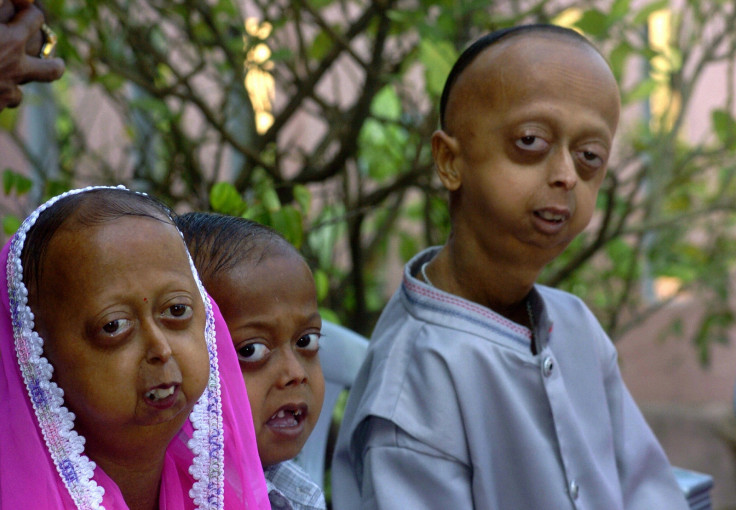Rare Disease Day: Five of the rarest conditions in the world

Rare Disease Day, observed on the last day of February, raises awareness of the impact that rare diseases have on the lives of patients and those who care for them.
What began as a European event in 2008 has become international, with participants from more countries joining each year. Since the date was first marked, thousands of events have been held worldwide, reaching hundreds of thousands of people.
The political momentum resulting from the day has also served advocacy purposes – contributing greatly to the advancement of EU policies on rare diseases and the creation of national plans for rare disease in several member states.
Due to the low prevalence of each disease, medical expertise is rare, knowledge is scare, the care on offer inadequate and research limited.
Here, IBTimes UK looks at some of the rarest diseases in the world.
Fibrodysplasia ossificans progressive
Sometimes referred to as Stone Man Syndrome, FOP is an extreme rare disease of the connective tissue. A mutation of the body's repair mechanism causes fibrous tissue – including muscle, tendon and ligament – to become ossified spontaneously or when damaged.
The disease affects around one in every two million people. Injuries can cause joints to become permanently frozen in place, but surgical removal of the extra bone growths has been shown to cause the body to "repair" the affected area with more bone.
Alstrom syndrome
One of the rarest genetic disorders in the world, there are only 502 known cases of Alstrom syndrome in 47 countries. It is caused by mutations in the gene ALMS1 and was first described by Carl-Henry Alstrom in 1959.
Symptoms of the rare autosomal recessive disease include childhood obesity, blindness due to congenital dystrophy, hearing loss, early-onset of type 2 diabetes, developmental delays and failure of the kidneys or liver.

Microcephaly
Microcephaly is a neurodevelopmental disorder in which a child's head is significantly smaller than the standard circumference for the age and gender, resulting in the brain developing abnormally in the womb or not growing after birth. The condition affects one in every 25,000 children and their life expectancy is normally reduced.
There is no treatment for microcephaly, but early intervention can help a child's development and improve their quality of life.
Harlequin-type ichthyosis
The severe genetic skin disease causes the dermis to be around ten times thicker than normal and grow at an exceptionally fast rate. At birth, the child's body is covered in thick, white plates of skin, separated by deep cracks, which can become easily infected with bacteria. The condition is associated with a mutation in the gene for the protein ABCA12.
Those with Harlequin-type ichthyosis may feature cranial and facial deformities, such as everted eyelids and under-developed ears or noses. Joints are occasionally lacking in movement and patients can be very sensitive to temperature changes, as hard and cracked skin prevents normal heat loss.
Hutchinson-Gilford progeria syndrome
Progeria is an extremely rare genetic disorder in which the symptoms resemble aspects of aging at a very early age. The condition affects one in eight million live births and those born with progeria typically live to their mid-teens to early twenties.
The condition occurs as a new mutation and is rarely inherited as carriers usually do not live to reproduce. Symptoms and signs of progeria include wrinkled skin, atherosclerosis, kidney failure, loss of eyesight, a tightening and hardening of the skin on the trunk of the body and brittle and fragile bones.
© Copyright IBTimes 2025. All rights reserved.






















